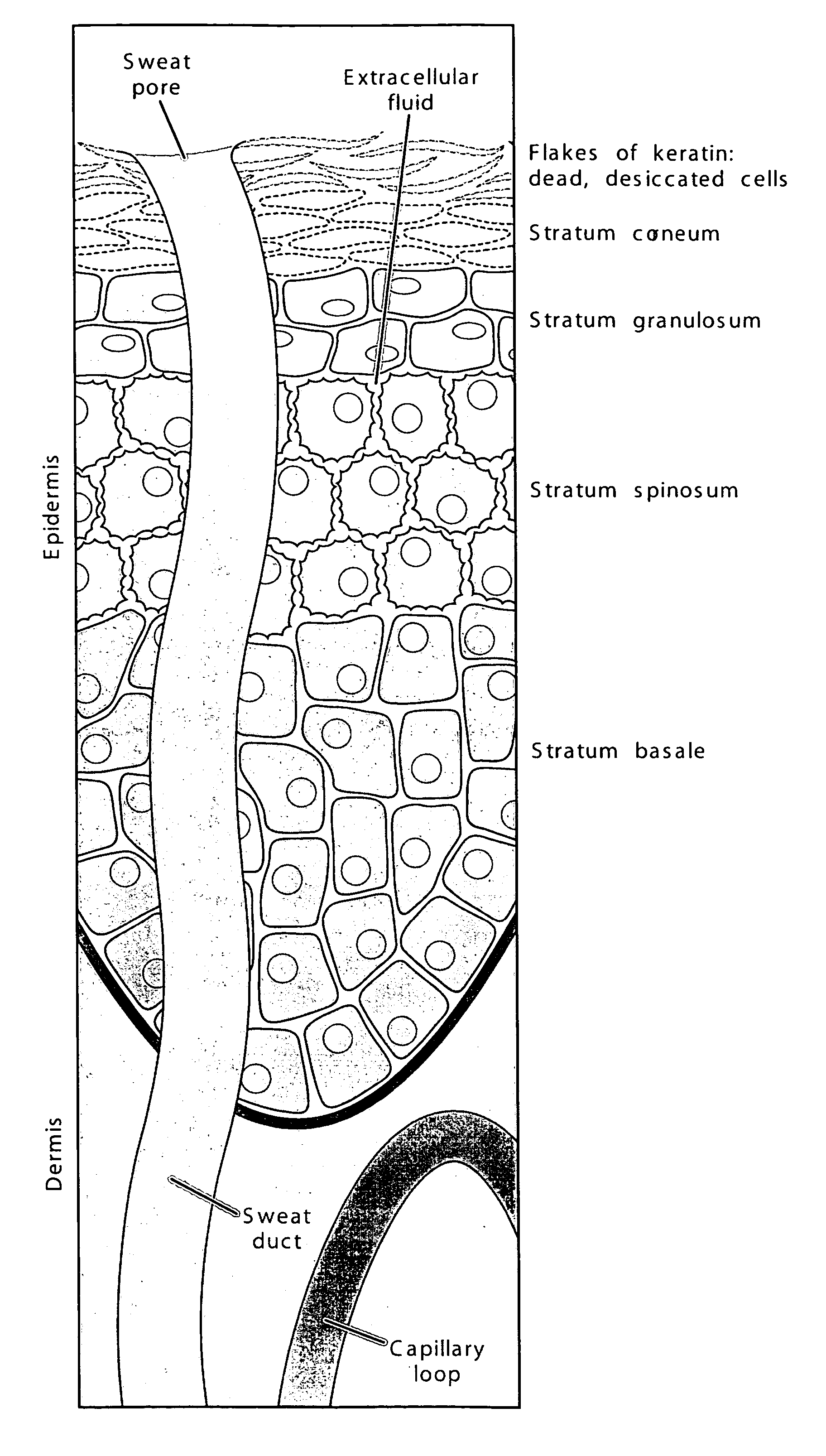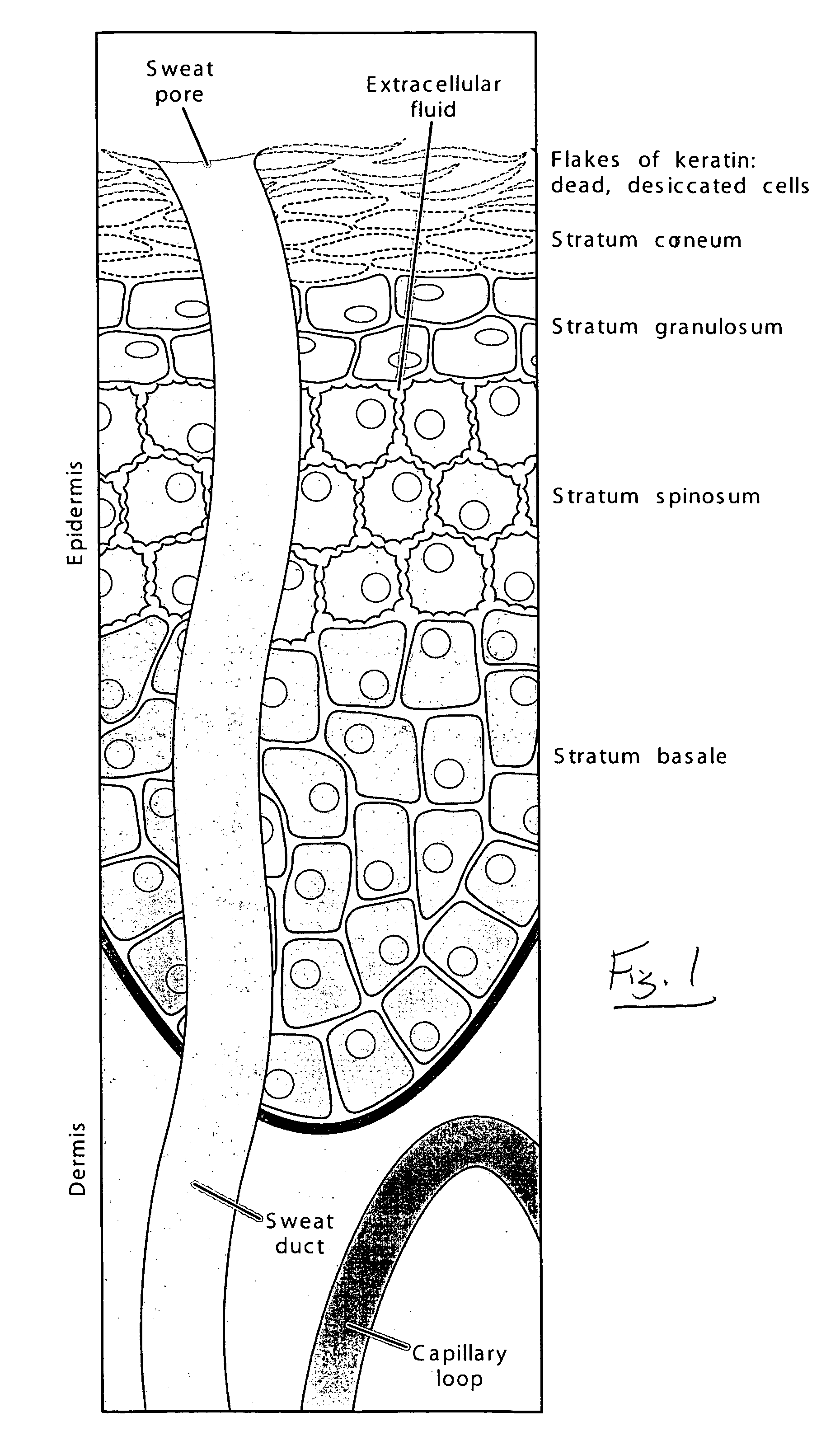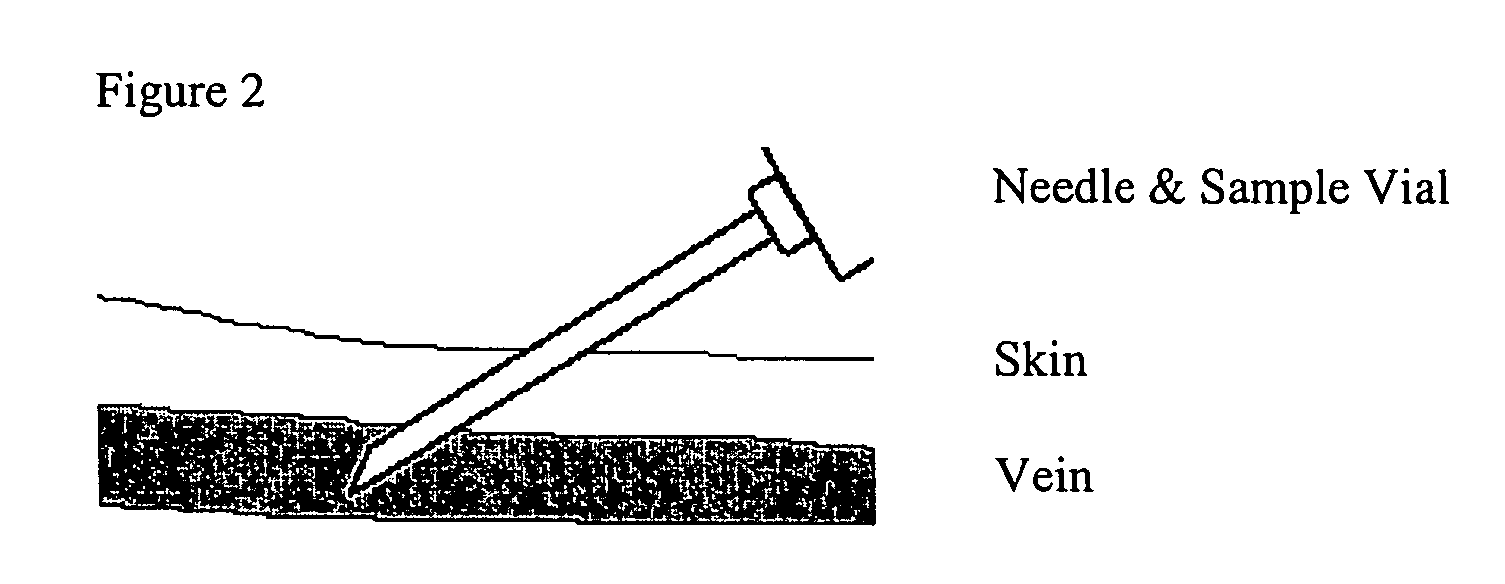Method for improved accuracy of blood testing
a blood test and accuracy technology, applied in the field of blood sampling methods, can solve the problems of falsely elevated capillary blood, achieve the effects of reducing the diameter of the skin pores, and reducing the size of the pores
- Summary
- Abstract
- Description
- Claims
- Application Information
AI Technical Summary
Benefits of technology
Problems solved by technology
Method used
Image
Examples
first embodiment
[0222] In the method, the D-Lead®“Type A” Anti Static Metal Sequestering Skin Cleaners are applied to the skin to wash the area that is to be penetrated to obtain the blood sample. The skin may be either pre-wetted or not. The sample area as well as a large area surrounding the stick site is washed thoroughly for 20 to 30 seconds and then the skin is rinsed with clean water and dried with a towel or cloth that is as free of the metal contaminant(s) of concern as is economically and technically feasible. The water may be hard, soft, de-ionized or distilled. The skin may also be dried with a blower, provided the drying air is free of dust, such as the air quality obtained with the use of high efficiency air filters.
second embodiment
[0223] In the method, the D-Lead®“Type B” skin cleaners are applied to the skin to wash the area that is to be penetrated to obtain the blood sample. The skin may be either pre-wetted or not. It appears that applying this cleaner to dry skin provides the greatest quantity of metal contaminant removal. These cleaners are effective at removing metal contamination with or without water. This is particularly useful when samples must be collected at a location without clean water.
third embodiment
[0224] In still the method, the Skin Cleaner of Type B is applied to the dry skin, and spread with clean gauze, paper towel or cloth to cover the sample area as well as a large area surrounding the stick site. Alternately, it may be spread with clean hands or with clean, gloved hands. The skin cleaner is rubbed over and into the skin. In the case of particularly dry or damaged skin, it may be necessary to apply more of the cleaner, as this cleaner can be adsorbed into skin that is very dry. After the cleaner has had 30 seconds to work, the cleaner along with the metal contaminants is removed by wiping with a clean, low metal content fabric, gauze, paper or cloth. It is beneficial if the substrate selected will bind the metals and provide a level of mild mechanical abrasion to assist in the exfoliation of the dead cells. Alternately, the cleaner and the metal contaminants can be rinsed off with clean water then dried as described for cleaners of “Type A.”
PUM
| Property | Measurement | Unit |
|---|---|---|
| Fraction | aaaaa | aaaaa |
| Fraction | aaaaa | aaaaa |
| Volume | aaaaa | aaaaa |
Abstract
Description
Claims
Application Information
 Login to View More
Login to View More - R&D
- Intellectual Property
- Life Sciences
- Materials
- Tech Scout
- Unparalleled Data Quality
- Higher Quality Content
- 60% Fewer Hallucinations
Browse by: Latest US Patents, China's latest patents, Technical Efficacy Thesaurus, Application Domain, Technology Topic, Popular Technical Reports.
© 2025 PatSnap. All rights reserved.Legal|Privacy policy|Modern Slavery Act Transparency Statement|Sitemap|About US| Contact US: help@patsnap.com



